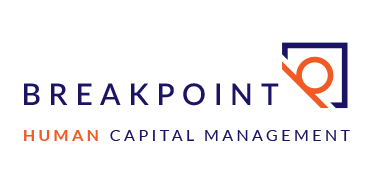In this Together
To succeed today requires a continued focus on high-quality results, but as organizations we must also actively manage how those results are produced. This means understanding the behaviours and situations of your employees who provide the needed inputs, tangible and intangible, for your organization to change and succeed.
Today, many of your employees may be working remotely. That is bringing new and accelerated challenges to the new world of work. Employees with children at home, school drop off and pickup schedules, elderly parents who are reliant on grocery ordering and pickup, all and more have the potential to build what becomes small spaces and big distractions. Your actions are key because they build the foundation of healthy communication and great relationships. You need to make the connection.
As people, it is easy in times where we’re stressed and uncertain to move away from social interactions and psychologically isolate ourselves. This is a growing symptom of many workplaces as the pandemic stretches in time. As an organization leader it is critical to look for signs of a person who is struggling to cope. Some of the signs are not socializing, not completing their work, or not communicating. This behaviour hurts both the person’s and the organization’s health and wellbeing.
So how do we work with our employees, as people, and deliver the results. Create an environment of connectivity. Make it personal. Give everyone a voice. Open your door. Listen. Keep your values up front. Even in times when we’re not able to come together in person.
Practically, the options are broad. Start by rethinking your meetings. Have a schedule of daily communications where everyone is invited to interact and share their tasks and challenges. This allows for shared ownership of difficulties instead of leaving any single employee to believe they are alone with the problem. The key approach to ensuring connectivity is to ensure an environment conducive to encouraging emotional connections. Plan for digression and allow your employees to interact on a wide breadth of subject and interests to really nurture a healthy mental and emotional state.
Think about how you are recognizing your employees for their contributions and commitment to their responsibilities, the team and the organization. Make it easy. Bring an employee’s contribution forward at meetings as an example for success, look for ways to adjust compensation based on merit that speaks to the person, a favourite Uber eats, a virtual yoga class, or book of the month. It can be as easy as a well-timed thank you from the senior management team. These, and other ways, let people know they're noticed and appreciated.
As employers we must think about where employees are in their life, health, circumstance when we assign tasks, determine work goals, and set the schedule of the work. Look for opportunities to prioritize the work and delegate based on what you know of your employees and their situations. Look at the addition of flexible work hours policies, job sharing programs, office drop in hours, office/remote work splits or other means of balancing getting the work done well and looking after the wellness of your employees.
Another way to build sustainable connections and engage the whole person is to create multifaceted teams able to adapt to any situation that arises. By creating inter-disciplinary teams your organization builds the capability for an immediate well-informed decision when needed, and shares the responsibility for decision across qualified people. Communication is key. Flow of information is fundamental to success. Invest in the tools requested by the team and a structure of decision making that is consistent, clear and concise.
In these unprecedented times to succeed it is not just about having the right people to do the job, it’s also key to take care of those people. Communication and connection are two sides of the same coin. Key to everything you hope to accomplish, starts with your actions and not your words. By sharing your own vulnerability, leading with your values, you will dramatically reduce the additional stress put on your employees. The benefits are increased productivity, higher morale, better employee relationships resulting in quicker adaptation of innovation and change leading to greater organizational success.
Justin De Bonis
Associate People, Culture and Engagement

